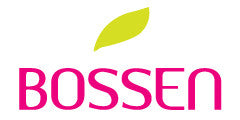Making the Perfect Cup of Milk Tea at a Bubble Tea Shop
Even though milk tea seems simple enough to make, there’s actually an art to creating a great quality version of this drink. To the surprise of many newcomers in the bubble tea industry, it takes a certain amount of effort, attention to detail, and several phases of quality control to produce a smooth and silky milk tea. This process doesn’t get any easier even if you own a bubble tea shop. In this article, we will not only go over three efficient methods for making delicious milk tea, we will also discuss tea fermentation and provide expert tips for optimal tea brewing.
The Traditional Method
Many bubble tea shops such as Quickly and Tapioca Express use the traditional method of pre-making milk tea. These large batches of tea need to be brewed either during the day or before the shop’s closing time, with each bucket lasting only a couple days. During this process, purified water is boiled in a large pot, leaves are added and later sifted using a filter cloth, and the resulting tea is transferred into one or more buckets. Cream and sugar may be mixed in while the newly-made tea is still hot. After the mixture acclimates to room temperature, it can then be chilled in a refrigerator.
Using this method, milk tea recipes are based on the sugar level before adding ice and toppings. For customized sugar levels, each tea type should have two buckets ready: one with 100% sugar and one with 0% sugar. This way, when an order comes in, bobaristas can adjust the milk tea’s sugar level accordingly. For example, if a customer wants an oolong tea with 50% sugar, bobaristas would combine half a cup of oolong tea with 100% sugar and half a cup of oolong tea with 0% sugar.
This method of creating milk tea requires less training, is cost efficient, and allows for a speedy drink delivery. However, it also takes up more space (for tea buckets), and customers are limited to cold and unvaried tea options. Since pre-made tea loses flavor over time, batches should be regularly checked for quality.
The Modified-Traditional Method
Another way to make milk tea at your bubble tea store would be combining pre-made with a made-to-order method. With over 90% of tea shops on board with this hybrid system, it is clearly the most popular tea-making model. The initial process of making tea batches is the same, but with the use of tea warmer dispensers, tea can remain heated for up to 8 hours. The largest tea warmer currently on the market can hold up to 12 liters (3.15 gallons) of tea. This method gives customers the option of ordering drinks hot or cold. Tea batches are usually made at least twice a day: before the store opens and midday during business hours.
Bobaristas would need to pour hot tea from the dispenser into a shaker, add sugar and creamer, and mix until the tea is smooth. If the customer wants their milk tea cold, ice and toppings may be added afterwards.
Concocting milk tea with this hybrid model is cost efficient, and it allows for more drink versatility. However, shop owners would need to invest more time into employee training to ensure a consistent quality of tea brew, sugar and ice levels, and kitchen space would be needed to store the brewed tea. Even though tea freshness is more manageable compared to the traditional method, residue from tea leaves in a large batch can still become bitter over time.
The Made-to-Order Method
For shops that are willing to spend a little more, the third method in creating a quality milk tea is using a tea shaker machine. Even though the initial setup and investment costs more than the traditional and hybrid models, this system is completely made-to-order, saves kitchen space, and one serving can be made in about 25 seconds. Bobaristas can easily operate this system, and the quality of the tea remains precise, consistent and fresh. If you choose to display this start-to-finish process, your customer can also be part of the tea-making experience. Although owners are limited to using ground leaves, this isn’t too bad since there are several ground tea varieties which provide plenty of flavor options. To watch this method in action, click here.
Understanding Tea Fermentation
Overall knowledge of tea types, their characteristics and fermentation are all crucial to making the perfect milk tea. Even though there are so many different types of teas, many types originate from one plant, Camellia Sinensis. Tea manufacturers realized when Camellia Sinensis grows under certain locations and climates, it can produce better qualities of varying classes of tea. Depending on the type of tea produced, the next step to the manufacturing process is fermentation, which is when freshly picked tea leaves are allowed to dry and undergo enzymatic oxidation.
The degree of fermentation is a huge factor in determining the type of teas produced. Teas such as green tea and white tea are either non-fermented or very lightly fermented. By stopping the fermentation process through pan frying or steaming, these teas are able to retain most of their original flavor. Teas that are semi-fermented are separated into three categories: light (10%-20%), medium (20%-50%) and heavy (50%-80%). Semi-fermented tea leaves used to make jasmine tea, pouchong tea, and various oolong teas produce a slightly yellow to brown hue and a subtle fragrance when steeped. Fully-fermented teas such as black tea create a dark red hue and a sweet sugary aroma, while post-fermented dark teas such as Pu-Erh Tea are fully-fermented, stopped, and later fermented again.
Brewing Tips for Better Results
It’s all in the details. While it’s important to understand the various methods of making tea and how the tea leaves are produced, shop owners should also keep water quality, temperatures, and steeping time in mind. After all, these are the major factors in creating the ideal cup of tea.

To explore options in Tea Leaves, visit the Bossenstore.com


